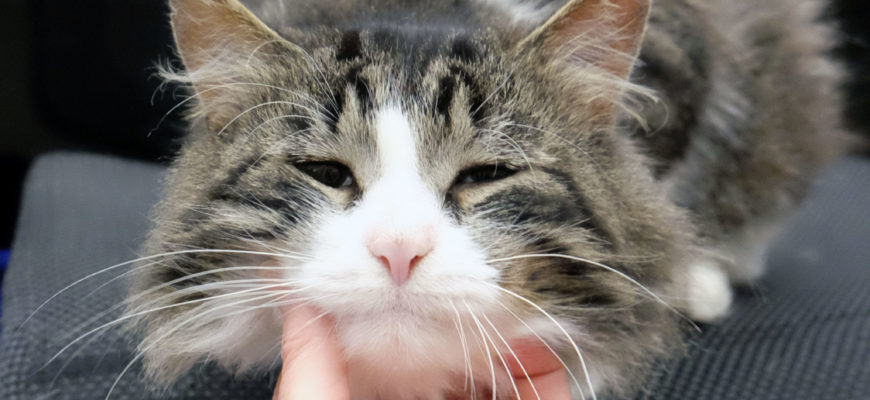We’re used to hearing the rules on how to meet a dog we don’t know. Parents teach their kids how to approach an unknown dog from the time they’re small, hoping to reduce the risk of bites. It’s not as common to talk about the right or wrong way to approach a cat, but there is indeed a right way to approach a cat you don’t know. In many ways, it’s similar to how we’d approach a dog, which makes it easier to remember when you meet a new cat!
• Make sure that our body language is non-threatening. Making yourself small, kneeling down and turning your body away, from the cat will help him to feel safer than an overhead, frontal approach would.
• Don’t make and hold eye contact, speak in calming tones and assess the cat’s body language. Respond to what they’re telling you with their body language
• Is the cat approaching you?
• Does he seem to be moving into your space with a loose body, rubbing on your legs?
• Or does he seem scared, maybe his body is tense and he’s unsure of approaching you?
• Let them approach and rub on your arms or legs, or stay where you are if they seem scared, talking to them, instead of continuing to approach.
Offering one finger (often just your index finger), instead of your whole hand, can be less threatening, as well. Cats introduce themselves to a new cat with a nose touch. We can reproduce this by offering one finger over even offering an open hand, it will seem more natural to the cat you’re introducing yourself to.
If the cat moves in to meet you, wait for them to tell you that they want attention. If they do rub on your arms or legs, avoid petting them too much. Instead, just pet on cheeks or chin. Avoid all full body pets or reaching in to pet them directly on the head as the cat might not be ready for that. Limited handling and waiting for consent to interact are two great ways to avoid bites.
And, finally, if the cat doesn’t move into your space or moves away entirely, don’t pursue them. You can definitely spend time offering great treats, but if they choose to move away, allow them then space they’re looking for. This will build confidence with them that you’re safe, someone who can be trusted not to push them to interact if they’re not ready.







